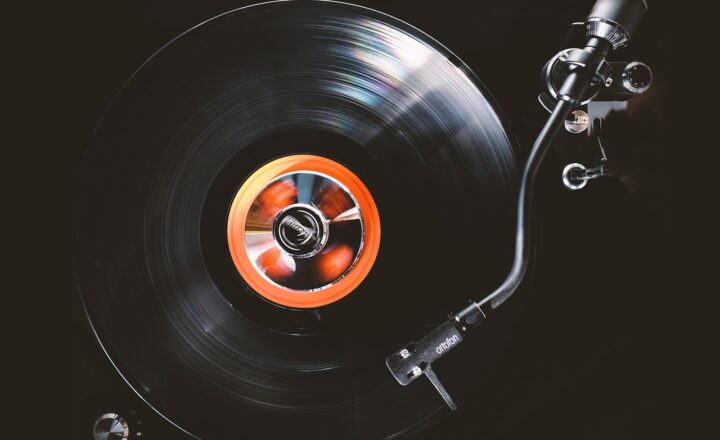How to Spot Rare and Valuable Vinyl Records in a Sea of Classics
November 18, 2024

Vinyl records have made a remarkable comeback in recent years, and for good reason. The warm sound quality, tangible nature of the format, and rich history associated with collectible records make them a favorite among music lovers and collectors alike. However, not all vinyl records are created equal. While you might find stacks of classics at your local thrift store or garage sales, it’s essential to know how to spot the rare and valuable gems hidden among them. This guide will take you through the key factors to consider when hunting for vinyl records that might be worth a substantial amount.
1. Understanding Rarity and Demand
Before diving into the specifics, it’s crucial to have a fundamental understanding of what defines rarity in vinyl records. Rarity can be attributed to several factors, including:
- Limited Pressing: Records that were produced in small quantities often become highly sought after.
- First Pressings: The first edition of a record, often containing original artwork or labels, is typically more valuable.
- Obscure Artists or Labels: Lesser-known musicians or small record labels can sometimes yield highly valuable records due to their cult followings.
- Popular Genres: Some genres, like punk, jazz, and early rock and roll, tend to have specific records that are coveted by collectors.
Understanding these factors can help you identify the potential value of a record you come across.
2. Identifying Key Features
When sifting through the vast ocean of vinyl records, pay attention to the following key features that can indicate a record’s rarity and value:
- Matrix Numbers: These numbers often reflect the pressing of a record. First pressings typically have unique matrix numbers that can be verified through collectors’ guides or online databases.
- Label Variations: Different label designs can impact a record’s value significantly. A record released under an obscure label or one that quickly changed is often rarer than reissues.
- Cover Art: The design and condition of the album cover are just as important as the record itself. First press covers may have unique artwork that later editions lack.
- Promotion or Test Pressings: Records sent out for promotional purposes or those used for testing audio before the final pressing can be extremely valuable.
Evaluating these features will enhance your ability to determine the worth of a vinyl record.
3. Relying on Resources and Communities
Finding valuable vinyl records often comes down to doing diligent research. Here are some excellent resources to aid in your quest:
- Price Guides: Utilize vinyl price guides such as “Goldmine Price Guide to Vinyl Records” to find valuations for records based on their condition, rarity, and demand.
- Online Marketplaces: Websites like Discogs or eBay provide valuable insights into the current market value of records. Check completed listings for recent sales to gauge realistic asking prices.
- Vinyl Collecting Communities: Join online forums, Facebook groups, or follow Instagram pages dedicated to vinyl collecting. Engaging with others provides you access to not just information, but also to potential buying or trading opportunities.
By leveraging these resources, you can make better-informed decisions while hunting for records.
4. Condition is Key
The condition of a vinyl record can greatly affect its value. Here are some grading terms to keep in mind:
- Mint (M): Sealed records without any visual imperfections.
- Near Mint (NM): A record that has been well cared for and shows no obvious signs of wear.
- Very Good (VG): Records with minor defects but still playable without skipping.
- Good (G): Noticeable wear and possibly some sound issues, but the charm of the record remains.
Being aware of grading standards will help you assess whether a record is worth the investment.
5. Tips for Thrift Store and Yard Sale Hunting
While vinyl record hunting can be incredibly exciting, it’s crucial to adopt a strategy that improves your chances:
- Go Early: Arriving at thrift stores or yard sales early gives you first pick of the inventory. Early birds often find the best records before other collectors swoop in.
- Know Your Genres: Familiarize yourself with artists and genres that have cult followings, as these records may be rare. Recording yourself a list of potential valuable titles ahead of time could be beneficial.
- Don’t Be Afraid to Ask: Often, sellers don’t know the worth of things. Asking to see records they haven’t displayed can lead to surprises.
- Be Patient: Vinyl hunting can take time and patience. Not every trip will yield valuable results, but persistence pays off over time.
By implementing these tips and remaining vigilant, you can turn every outing into an opportunity for discovery.
Conclusion
With the resurgence of vinyl records, knowing how to spot rare and valuable pieces can be incredibly rewarding. Whether you’re searching through dusty crates at thrift stores, flipping through boxes at flea markets, or online hunting for gems, the ability to recognize rarity and value will elevate your collecting journey. Remember to research, engage with the community, and assess condition with care. As you become more knowledgeable in the field of vinyl records, those hidden treasures waiting beneath the surface will become easier to find, allowing you to build an impressive and valuable collection.
So grab that magnifying glass, get your vinyl-friendly gear together, and embark on a fun and profitable hunt for rare records! Now, the next classic you stumble upon might just hold the key to a valuable addition to your collection.






